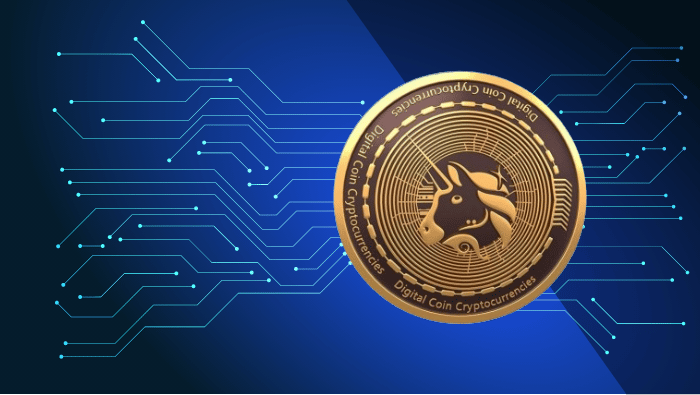Uniswap and its Decentralized Exchange Platform

Decentralized finance (DeFi) is a fast-growing trend in the cryptocurrency space, and Uniswap has become one of the most popular decentralized exchange platforms. In this article, we will explore what Uniswap is, how it works, and its advantages and disadvantages compared to traditional centralized exchanges.
1. Introduction
Uniswap is a decentralized exchange protocol that allows users to trade cryptocurrencies without the need for intermediaries such as banks or brokers. It is built on the Ethereum blockchain and operates on a peer-to-peer basis, enabling anyone to trade cryptocurrencies with anyone else without having to go through a centralized authority.
2. What is Uniswap?
Uniswap is a decentralized exchange platform that enables users to trade Ethereum-based tokens. It was founded in November 2018 by Hayden Adams, who created Uniswap as a way to solve the problem of liquidity on decentralized exchanges. Uniswap is an open-source protocol, meaning that anyone can use it and contribute to its development.
3. How Uniswap Works
Uniswap works by using an automated market maker (AMM) system that relies on a series of smart contracts. These smart contracts allow users to pool their tokens together in what is known as liquidity pools. When a user wants to trade a particular token, they can do so by swapping it with another token in the liquidity pool.
The price of each token in the liquidity pool is determined by a simple algorithm based on the ratio of the two tokens in the pool. This means that the price of a token will increase as more people buy it and decrease as more people sell it. As a result, Uniswap provides a way for users to trade tokens without relying on traditional order books or bid-ask spreads.
4. Uniswap Liquidity Pools
Uniswap liquidity pools are a key feature of the platform. They are created by users who deposit equal amounts of two different tokens into the pool. These tokens are then used to provide liquidity for the platform, and users who trade on Uniswap pay a small fee for the privilege of doing so.
5. Uniswap Trading Fees
Uniswap charges a 0.3% fee on all trades conducted on its platform. This fee is paid to liquidity providers who have deposited tokens into the liquidity pools. The fee is designed to incentivize liquidity providers to contribute to the platform and ensure that there is always enough liquidity for users to trade.
6. Advantages of Uniswap
One of the main advantages of Uniswap is its decentralization. Unlike centralized exchanges, which require users to deposit their tokens with a third party, Uniswap enables users to retain control of their tokens at all times. This reduces the risk of theft or loss and provides users with greater security.
Another advantage of Uniswap is its low fees. Compared to centralized exchanges, which often charge high fees for trading and withdrawals, Uniswap’s fees are relatively low. Additionally, users can earn a portion of the trading fees by providing liquidity to the platform.
Uniswap also provides greater accessibility to users who may not have access to traditional centralized exchanges. With Uniswap, anyone with an internet connection can trade cryptocurrencies, regardless of their location or financial status.
7. Disadvantages of Uniswap
One of the main disadvantages of Uniswap is its reliance on the Ethereum blockchain. Since Uniswap is built on the Ethereum blockchain, it is subject to its limitations, including high gas fees and network congestion during periods of high demand.
Another disadvantage is the risk of impermanent loss for liquidity providers. Since the value of tokens in the liquidity pool can change over time, liquidity providers may experience a loss in value when they withdraw their tokens from the pool.
8. Comparison with Centralized Exchanges
Compared to centralized exchanges, Uniswap offers greater decentralization, lower fees, and greater accessibility. However, centralized exchanges still offer advantages in terms of trading volume, market depth, and liquidity.
9. Future of Uniswap
The future of Uniswap looks promising, as more users and developers continue to adopt the platform. With the growing popularity of DeFi and the increasing interest in cryptocurrencies, Uniswap is well-positioned to continue its growth and development.
10. How to use Uniswap
Using Uniswap is relatively straightforward. Users simply need to connect their Ethereum wallet to the platform and choose the token they wish to trade. From there, they can select the token they wish to swap it with and confirm the transaction.
11. Security Measures of Uniswap
Uniswap has implemented several security measures to protect users and their funds. These include the use of smart contracts, multi-signature wallets, and a bug bounty program to incentivize developers to find and report vulnerabilities.
12. Risks and Limitations of Uniswap
Like any financial platform, Uniswap carries certain risks and limitations. These include the risk of market volatility, the risk of impermanent loss for liquidity providers, and the potential for hacking or security breaches.



